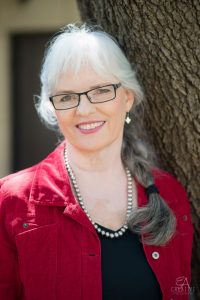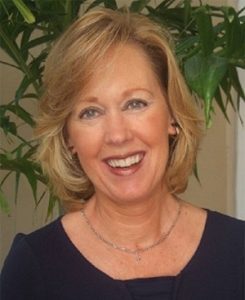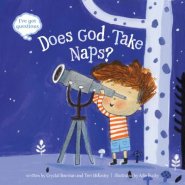Meet Virginia Lieto!
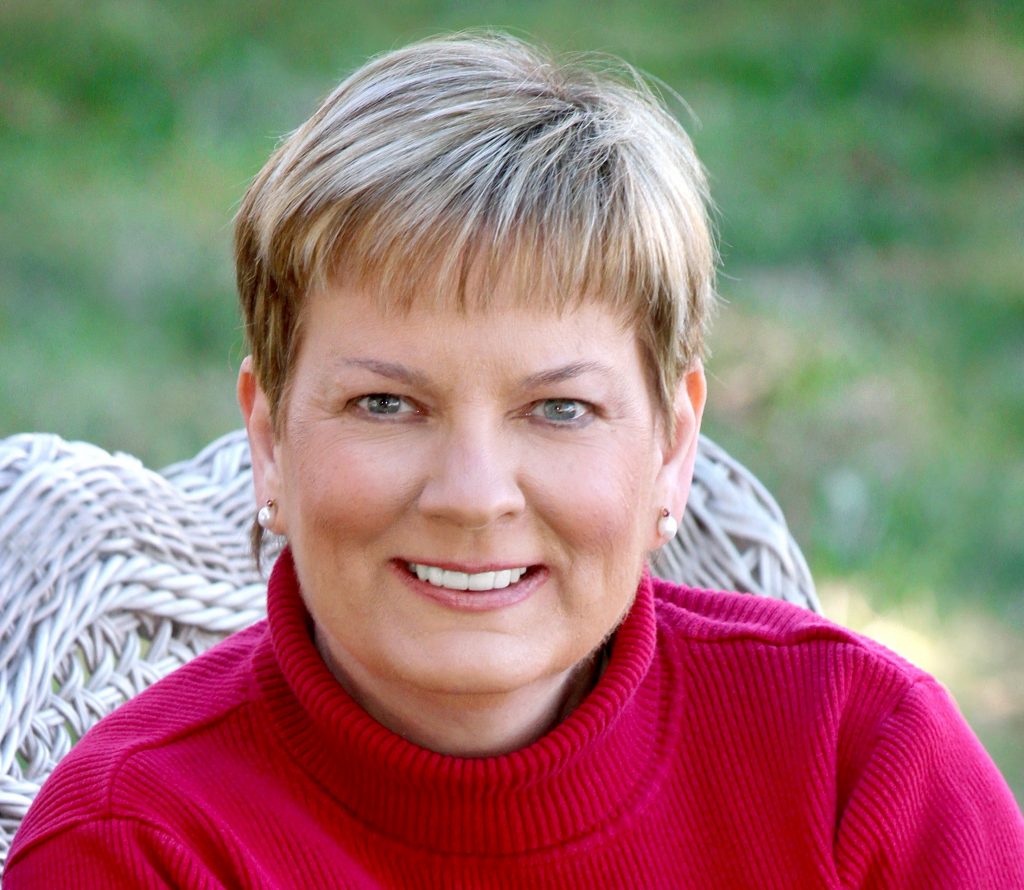
 Virginia Lieto is a Theology professor at Saint Joseph’s College of Maine, where she also obtained her Master of Arts in Pastoral Theology. In addition to teaching, she is a public speaker on faith. Her first book in a series is “Adventures of Faith, Hope and Charity – Finding Patience,” a Catholic Writer’s Guild Seal of Approval recipient. Ms. Lieto also maintains her own blog, writing about virtue and morality at www.virginialieto.com.
Virginia Lieto is a Theology professor at Saint Joseph’s College of Maine, where she also obtained her Master of Arts in Pastoral Theology. In addition to teaching, she is a public speaker on faith. Her first book in a series is “Adventures of Faith, Hope and Charity – Finding Patience,” a Catholic Writer’s Guild Seal of Approval recipient. Ms. Lieto also maintains her own blog, writing about virtue and morality at www.virginialieto.com.
Tell us about your newest book.
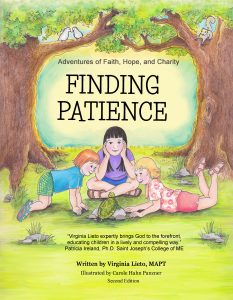
Adventures of Faith, Hope and Charity – Finding Patience centers on three sisters who learn the value of the virtue of patience from their parents. This enchanting tale, (which includes loveable puppies), shows God at the forefront of the story. Both educating and entertaining, this book offers parents and educators a means for teaching children about patience.
For children, waiting for anything seems endless! Faith Livingstone would agree, having just moved to a new town, and about to enter a new school. Faith wants so badly to make new friends. She wants to feel like she belongs in her new surroundings. It all can’t happen fast enough for Faith.
This story is perfect for children ages 4-8, especially those who have recently moved, those changing schools, or those who just feel out of sorts. It’s when we are stressed that our impatience rises. That’s true for children and adults! We can all use a little more patience.
What genre do you focus on and why?
Children’s stories come easy to me. In remembering my own childhood struggles and joys, I draw on these memories to bring relatable stories to life for children. Teaching them the virtues, in a manner they can understand, prepares them well for growing up into mature, morally upright adults.
Why do you write? What drives you?
I write for enjoyment, literally when the Spirit moves me. One day, as I was preparing for the release of Finding Patience, I was thinking about the topic for the next book. I had one idea in mind, but felt a clear “No!” The Spirit placed upon my heart Finding Acceptance, a story about bullying and dealing appropriately with diversity regarding the physically challenged. That book is now written and edited.
Who is your main character, and how did you choose that name?
For Finding Patience, the main character is the oldest sister, Faith Livingstone. For Finding Acceptance, the main character will be Hope, and for the third book (still in my head), Finding Love, Charity will be the lead character.
I chose Faith, Hope and Charity as the names for the three sisters because they represent the theological virtues of Faith, Hope and Charity. Faith has black hair, because she represents the virtue of Faith, where God will find you, even in the darkness and give you the light of Faith. Hope has blond hair because she represents the light of Christ. Charity has red hair because she represents Love. Each of the three girls’ personalities also mimic their names, where Faith is serious, Hope is bubbly, and Charity is filled with love and admiration for her older sisters.
What does a day in your writing world look like?
I spend much of my time grading assignments for my Theology students. Beyond that, I write my blog posts for each month in a sit-down session that takes about two to three days a month. My children’s books, on the other hand, stay swirling in my head until I have the entire story plotted out. Then I sit down and pump it out (first draft).
Being a public speaker, I also spend a good deal of my time crafting presentations. I can spend as much time doing that as any author would to publish a book.
What is the hardest part of being an author? Why?
Marketing and Distribution – not my strong suit.
What’s the best part of your author’s life? Why?
Reading to children at the local schools – I love being around them, feeding off their excitement.
What are you most proud of?
I’ve been married to the same wonderful man for 38 years!
Do you have other books? We’d love to know.
Not yet. Finding Acceptance is in process. Finding Love is next up after Finding Acceptance gets to market.
What are you working on now?
Trying to find an illustrator for Finding Acceptance, who can draw the characters in the same way as drawn for Finding Patience.
Website: http://virginialieto.com
Link to book: http://amzn.to/2s5uR3Z
Social media links:
Google +: https://plus.google.com/u/0/112075609426695922253
Facebook: http://bit.ly/2s5jgSi
Twitter: @virginialieto
Linked-In: https://www.linkedin.com/in/virginialieto/
Pinterest: https://www.pinterest.com/virginialieto/boards/
Meet Davalynn Spencer!
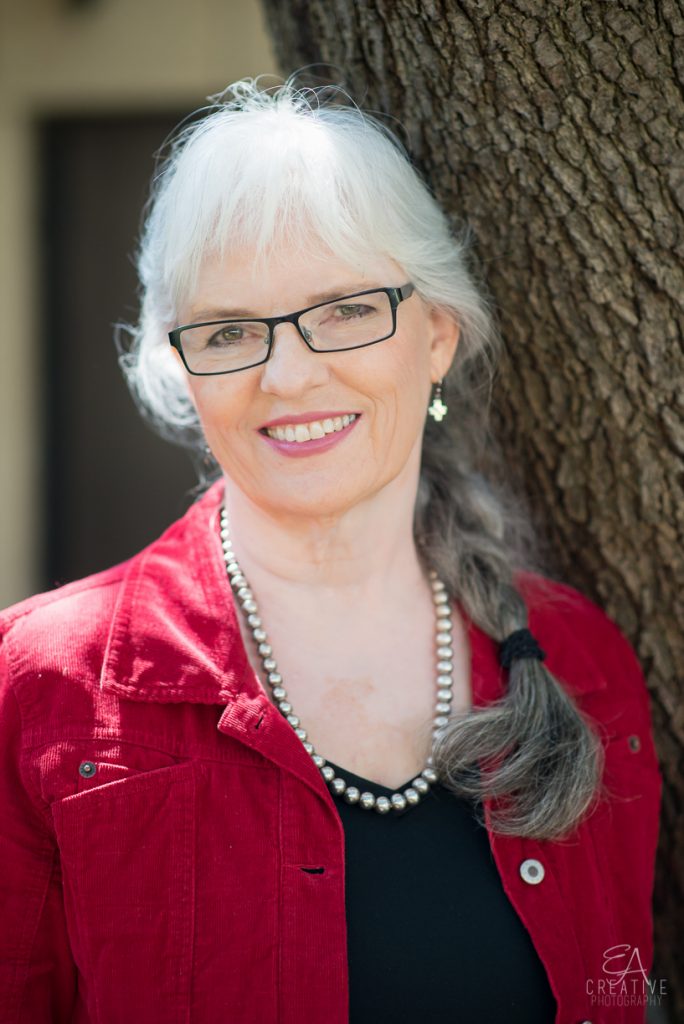
When award-winning author Davalynn Spencer isn’t writing bestselling Western romance with rugged cowboys, she’s teaching creative writing at the local college. At home on Colorado’s Front Range, her rodeo and journalistic background inspires many of her stories. Her novel, Romancing the Widow, won the 2015 Will Rogers Gold Medallion Award for inspirational Western fiction.
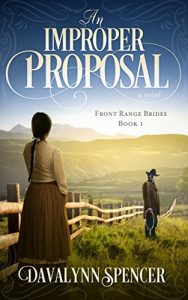 Tell us about your newest book.
Tell us about your newest book.
Things don’t go as planned for mail order bride Mae Ann Remington. Not that she could plan much anyway, other than accepting Henry Reiker’s offer of marriage and the train ticket he sent for her trip to Colorado. But when someone else’s greed costs her everything—including her groom—she has no choice but to do the unthinkable and propose to a complete stranger.
Rancher Cade Parker goes to the bank to withdraw cash for his sister, not find himself a wife. But that’s exactly what he does when he carries a dead farmer to the undertaker and ends up accepting the desperate bride’s “business proposition.” What he didn’t figure on was falling in love.
Forced to live out her deceased mother’s mantra of “God works everything out for good,” Mae Ann ends up as a Colorado rancher’s wife facing snakes, scoundrels, and second chances.
What genre do you focus on and why?
Historical western romance has been my focus for the past five years, though I’ve written nearly as many contemporary stories. I guess it’s all part of God “working everything out for good.”
Why do you write? What drives you?
I have a compelling urge to put things into words—emotions, events, sunrises, smells, everything. I love combining all those things into a story where I can create the setting and people who live out struggles we face in our everyday lives.
Who is your main character, and how did you choose that name?
Mae Ann Remington simply showed up “on scene” in my imagination one wintry morning while I sat in front of the woodstove with my laptop. I had to write down what I saw happening in her life. It was unthinkable, but I knew it was the beginning of a story.
What does a day in your writing world look like?
I’m up at 5:30 because I like to spend time alone with God before sunup and noise. I walk or exercise weekdays, fix breakfast, check email, and start writing as soon as possible. Afternoons are spent on lesson plans for the college class I teach, shopping, errands, household chores, and sometimes coffee with a friend. On days I don’t have any afternoon demands, I keep writing—living in my fictional world.
What is the hardest part of being an author? Why?
I believe the hardest part of successful authorship in today’s world is marketing. Doing all those other things one must do that are not writing.
What’s the best part of your author’s life? Why?
The best part of an author’s life is hearing or reading a comment by a reader that shows how your words touched his or her life, opened eyes, healed a heart, inspired a dream.
What is the craziest thing you’ve experienced as an author?
As a Christian author who writes inspirational romance, the craziest moment for me came during a discussion with a secular author who believed “inspirational romance” was an oxymoron. Not that I expect everyone to prefer my genre, but it was a sad moment of realization that the person knew so little about real romance and our real God.
What are you most proud of?
Honestly? My children who all love God.
Career-wise? Winning the 2015 Will Rogers Gold Medallion because it is an award given for creative work in the Western world, presented by those who understand the nuances and history of the West.
What is your favorite pastime?
Reading a great book that takes me to another time and place historically, or watching a great Western movie. There’s also chocolate. And bacon.
Do you have other books? We’d love to know.
I have four other published novels with Harlequin and three novellas in Barbour collections. All are listed on my website, Amazon author page, and Goodreads.
What are you working on now?
I’ve recently finished a novel set in 1910 during the silent movie era of Western flicks filmed in Cañon City, Colorado, before Hollywood became the movie mecca. City girl meets cowboy—in a most unusual way.
Website: www.davalynnspencer.com
Link to book: LIVE ON JUNE 1, 2017
Social media links:
http://www.facebook.com/AuthorDavalynnSpencer
http://twitter.com/davalynnspencer
https://www.goodreads.com/author/show/5051432.Davalynn_Spencer
http://pinterest.com/davalynnspencer/boards/
http://www.amazon.com/author/davalynnspencer
Meet Kathy Collard Miller
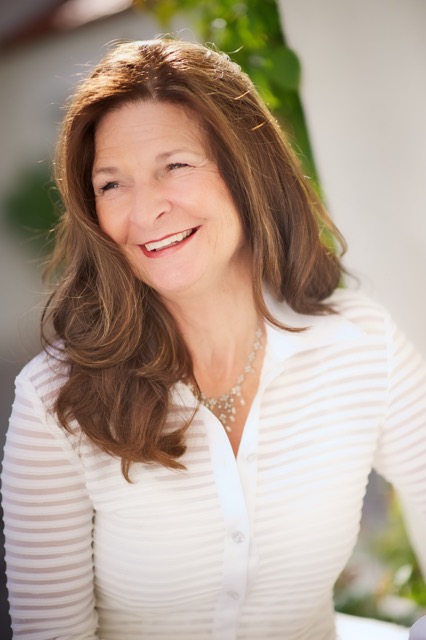
Here’s her bio: Kathy Collard Miller loves her family, writing, and speaking. She is wife to Larry for over 45 years, has two children, and two grandchildren. She is amazed God has given her the incredible privilege of writing over 50 books, numerous articles, and speaking in 8 foreign countries and over 30 states. Plus, she and Larry are co-authors and lay counselors.
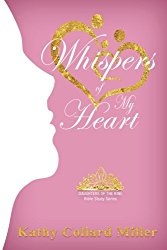 Tell us about your newest book. Whispers of My Heart: Daughters of the King Bible Study Series is one of the twelve books in a women’s Bible study series that came out originally in the 1990’s. Since the twelve books went out of print, I’d always wanted to update and expand the books. And Elk Lake Publishing Inc. has given me that opportunity and privilege. Whispers of My Heart has ten lessons on prayer with commentary and questions that can be used by individuals or groups. These books were very popular years ago and I still receive requests for copies. So I’m excited about having the series available again. Choices of the Heart (revised and expanded) has been available for a few months longer and now Whispers of My Heart joins it.
Tell us about your newest book. Whispers of My Heart: Daughters of the King Bible Study Series is one of the twelve books in a women’s Bible study series that came out originally in the 1990’s. Since the twelve books went out of print, I’d always wanted to update and expand the books. And Elk Lake Publishing Inc. has given me that opportunity and privilege. Whispers of My Heart has ten lessons on prayer with commentary and questions that can be used by individuals or groups. These books were very popular years ago and I still receive requests for copies. So I’m excited about having the series available again. Choices of the Heart (revised and expanded) has been available for a few months longer and now Whispers of My Heart joins it.
What genre do you focus on and why? I write only non-fiction. I find non-fiction pretty easy after so many years and I’m comfortable in that genre. Or could it be that an agent once said to me, “Stick to non-fiction”? Hmmmm, that could have something to do with it.
Why do you write? What drives you? I am driven to communicate practical and applicable biblical ideas to readers which will draw them closer to knowing God’s love for them and empower them to trust God more. I think our human cry most often is, “God, do you care and love me? And can you be trusted?” Interestingly when the disciples woke up Jesus in the storm tossed boat, fearing they would die, these strong fishermen (who had experienced many storms) cried out, “Teacher, do you not care we are perishing?” What motivates our worry, doubt, and any sinful response is a lie that God doesn’t love us; that He can’t be trusted. Knowing the truth about God and trusting His love has made a huge difference for me and I want to share the joy with others.
What does a day in your writing world look like? I have the incredible blessing of wanting to be at my desk writing more than just about anything else—except being with those I love and am close to. Lots of writers have to wait for inspiration. I may experience writers block but it seems to dissipate pretty fast. I just love working with words and as I look to God to guide me, the words flow. As a result, I’m at my desk writing unless God leads in another direction. I am also a speaker and lay counselor so any given day is different but it’s definitely an adventure to see how God will lead.
What is the hardest part of being an author? Why? Knowing what to work on at any given moment is the hardest about my writing. A writer does so many different things: creating, promoting, blogging, speaking, and marketing. Plus social media can be good but addicting. I’ve been mediating on the concept of abiding (John 15:5) for almost two years and I’m sure it’ll be a future book. But abiding through seeking God moment by moment and evaluating my motives empowers me to know God’s direction.
What’s the best part of your author’s life? Why? The best part for me is finding out God used the concepts of a particular book to enlighten a reader. Or best of all, that reader more fully knows he or she is loved by God and then is set free from lies which block her trust in God. The other day I received an email from a woman and she explained she heard me speak twenty years. My story of overcoming being an abusive mom gave her hope and instruction for dealing with her own anger. She had carried with her the notes from that meeting through several house changes and shared the ideas with others. She was writing to ask me to speak at a young mom’s group, which she was coordinating. It was such a joy to see her again.
What is the craziest thing you’ve experienced as an author? Well, I haven’t actually experienced this but I’m hoping I will some day and it would be crazy! I’m hoping some day to be in a public place and see someone reading one of my books. I want to see the look on her face when I stand in front of her and ask, “Would you like me to autograph that book for you?” There’s still time for that to happen, right?
What are you most shocked by? I’m most thrilled and shocked that what I thought God could never use, He has used abundantly. Over 40 years ago when I was physically and verbally abusing my two-year-old daughter and convinced it was only a matter of time before I killed her in one of my rages, I had no hope and almost committed suicide. I prayed and begged for an instantaneous deliverance but thought God had given up on me, even though I was a Christian, because there was none showing up. Then God began changing me through little steps over time. He healed the relationships between me and my daughter, and me and my husband. I wrote an article about it, then a book, and then shared my story at my church. That was the beginning of a ministry that has continued for 40 years, taking me around the world. God proved his creativity and faithfulness and He receives all the glory for it. It’s still shocking and thrilling to me.
Do you have other books? We’d love to know. My currently available books are a women’s Bible study series including Choices of the Heart and Whispers of My Heart. And women’s spiritual growth books like Partly Cloudy with Scattered Worries and Never Ever Be the Same: A New You Starts Today (co-authored with my husband, Larry).
What are you working on now? I finished recently another Bible study in the women’s Bible study series (Daughters of the King Bible Study Series): At the Heart of Friendship. It’ll be available late summer, 2017. And now I’m working on the fourth Bible study book on the topic of the Proverbs: Heart Wisdom. I’m excited that these expanded and updated versions of my Bible study series (from the 1990’s) are available.
Website/blog: www.KathyCollardMiller.com
Link to books: https://www.amazon.com/Kathy-Collard-Miller/e/B001KMI10S/ref=dp_byline_cont_book_1
Social media links:
www.Facebook.com/KathyCollardMillerAuthor
@KathyCMiller
Meet the Author: Karen Whiting
Tell us about your newest book.
52 themed weekly readings, chats, hands on activities, and scrapbook prompts will nurture children’s faith. Busy families can choose the level of commitment each week and pick what activities fit their schedule. They can also enjoy the chats on the go or at meals. Each week starts with a family beatitudes to connect the purpose with a benefit, such as Happy is the Family who is giving for they will be full of gratitude.
What genre do you focus on and why?
 I focus on nonfiction because I believe God called me to equip family members with tools that inspire them and help them grow in faith.
I focus on nonfiction because I believe God called me to equip family members with tools that inspire them and help them grow in faith.
Why do you write? What drives you?
Like Paul in 1 Corinthians 9:16, I feel compelled to write what God has called me to share.
What does a day in your writing world look like?
I write from 9 am to about 4 or 5 pm. I have a few times when I stop and check email. I tend to have a list of what I’ll work on for the week and use that to choose what to do each day. Friday afternoons I clean my office and write a new list.
What is the hardest part of being an author? Why?
For me it is crafting the words and rewriting. I’m a mathematician so words don’t come easily. My mind is like a popcorn popper, but it takes time to put them in black and white and form the sentences to capture the interest of readers and clearly convey the message.
What’s the best part of your author’s life? Why?
The opportunities to meet people and travel. I am always happy to hear someone’s story or how God has touched their lives.
What is the craziest thing you’ve experienced as an author?
Probably the introductions (even if I’ve given them a bio). One time the host ran through the reasons why the main speaker changed so many times. She told the audience clearly about the six people who one by one could not make it. Then while waving my bio in the air, she said “so we have Karen Whiting and I don’t know anything about her but we’re happy to have a body.”
What are you most proud of?
I am thankful that I have been persistent and God has used me.
What is your favorite pastime?
Being with family. I also enjoy cooking and Zumba. When I have time I like to sew or knit.
Do you have other books? We’d love to know.
I have 22 other books for women, family, children, and the military. I also have two more releasing this year:
Gift of Bread: Recipes for Heart and Table that shares insights into bread in the Bible, heartwarming stories around bread, and recipes.
Girl Talk Guy Talk, book of devotions for teens on communicating with friends and the opposite sex.
What are you working on now?
I’m working on a few proposals, some for teens and some for adults. For tweens, I’m working on some life skills and ideas to help them develop kindness. For adults I want to share some encouragement that will help them know their purpose.
Website: www.karenwhiting.com
Social media links:
Facebook (new page) https://www.facebook.com/FamilyFaithandFood
Twitter @KarenHWhiting
Pinterest KarenWhiting
Meet the Author: Crystal Bowman
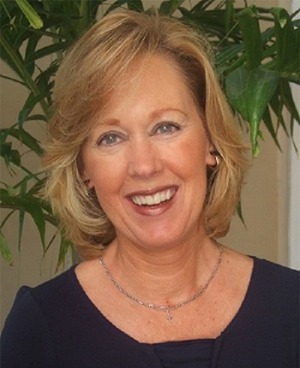
Here’s her bio: Crystal Bowman is an award-winning author of more than 100 books for children. She also writes stories for Clubhouse Jr. magazine and lyrics for children’s piano music. She has written for many popular series, such as Little Blessings, BOZ the Bear, I Can Read!, and Berenstain Bears. She and her daughter are co-authors of Our Daily Bread for Kids, Our Daily Bread for Preschoolers, Our Daily Bread for Little Hearts, and M is for Manger.
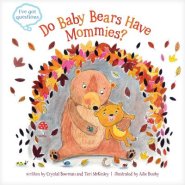 Tell us about your newest book.
Tell us about your newest book.
Kids are full of questions—some silly and some serious. These two books feature kid-friendly questions and answers that are whimsical and educational, with a spiritual element gently woven into the text. Do Baby Bears Have Mommies? teaches children about God’s animal kingdom. Does God Take Naps? teaches children about the person of God.
What genre do you focus on and why?
I write for children—everything from board books and picture books, to devotional books and Bible story books. My background is early childhood education and my heart is to reach kids for Jesus.
Why do you write? What drives you?
Writing is my passion. God created me with a desire to write and share His truth with children and their families. For me, writing is like breathing—it’s something I have to do.
What does a day in your writing world look like?
It varies, depending on deadlines and how many projects I am currently working on. I make sure I get out of the house almost every day—even if it is going to the gym for an hour or going for a walk. On Wednesday mornings I have MOPS, so that day I give myself a break from the computer and spend more time out of the house.
What is the hardest part of being an author? Why?
Staying current on the market trends and needs, and also the need to network and promote through social media. Writing is only a portion of what authors do. Speaking, promoting, and blogging are time consuming, but necessary.
What’s the best part of your author’s life? Why?
Teaching children about God, and telling them that Jesus loves them and cares about them. When they learn that truth at a young age, it builds a foundation for the rest of their lives.
What is the craziest thing you’ve experienced as an author?
Having several of my books end up on the best sellers list. Only God can make that happen!
What are you most proud of?
A few years ago, my daughter started co-authoring some of my books. She is so talented and creative, and working with her has made me a better writer. I love seeing her name on my book covers along with mine.
What is your favorite pastime?
That’s an easy one—spending time with my grandchildren.
Do you have other books? We’d love to know.
I have been writing for over 25 years and have written more than 100 books. I am thrilled to be writing children’s books for Our Daily Bread, and I also love my pictures books with Tyndale. M is for Manger has been a popular title as well as My Grandma and Me.
What are you working on now?
More picture books for Tyndale and more board books for Our Daily Bread.
Website: www.crystalbowman.com
Link to books: https://www.christianbook.com/does-god-take-naps/crystal-bowman/9781496417411/pd/417412?product_redirect=1&Ntt=417412&item_code=&Ntk=keywords&event=ESRCP
https://www.christianbook.com/do-baby-bears-have-mommies/crystal-bowman/9781496417404/pd/417405?product_redirect=1&Ntt=417405&item_code=&Ntk=keywords&event=ESRCP
Social media links: https://www.facebook.com/crystaljbowman/
https://www.facebook.com/crystal.bowman.3958
http://christianchildrensauthors.com/

